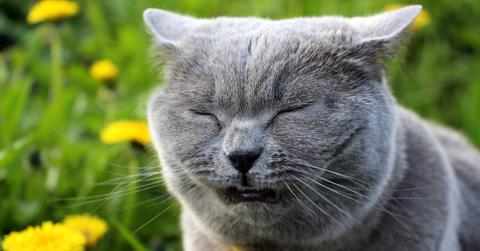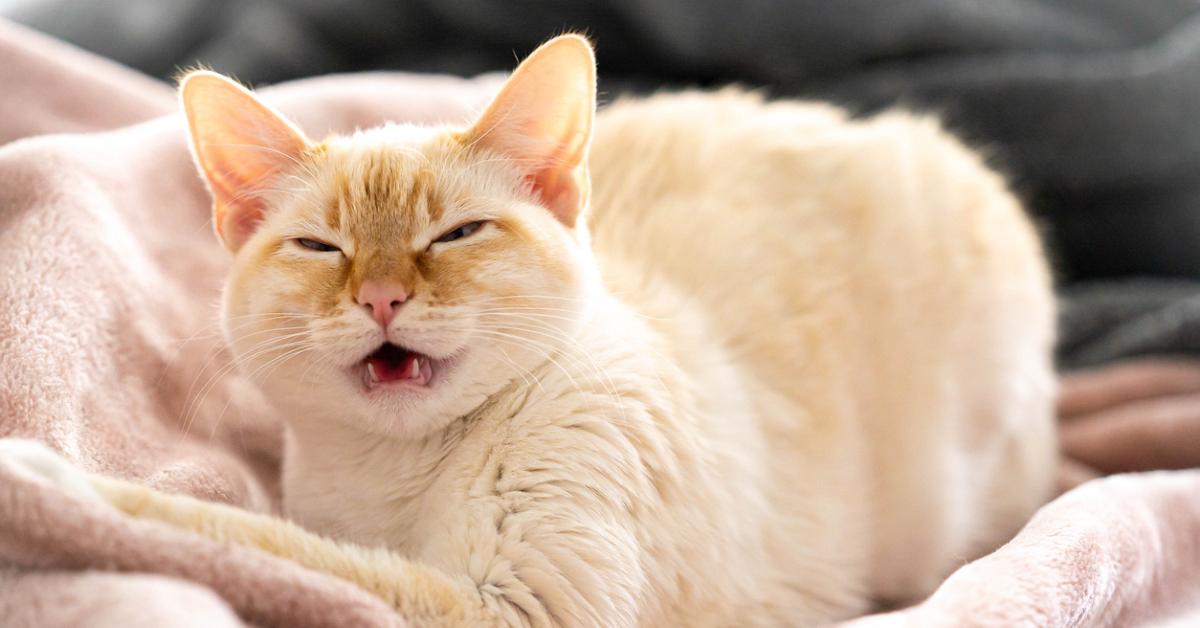What's That Sound From Your Feline Friend? A Veterinarian Explains All Things Cat Sneezing (Exclusive)
"Sneezing in cats is most frequently associated with upper respiratory infections (URIs) caused by bacteria and/or viruses," Dr. Julie Hunt exclusively tells Green Matters.
Updated July 2 2024, 4:26 p.m. ET

To cat people used to hearing "achoo!" on the regular, fear not, the devil is not trying to snatch your precious fur baby's soul (a now-hilarious myth dating back to the Great Plague of 1665, as per The Guardian). Academic veterinarian Dr. Julie Hunt exclusively tells Green Matters that excessive cat sneezing has nothing to do with evil spirits or Lucifer but rather potential upper respiratory infections.
We spoke via email with Dr. Hunt — Associate Dean of Clinical Sciences at Lincoln Memorial University College of Veterinary Medicine and veterinary contributor at Embrace Pet Insurance — about all things cat sneezing and cat reverse sneezing. Here's what to look out for and when it's time to book an appointment with Fluffy's vet.

Why is my cat sneezing a lot? Veterinarian Dr. Julie Hunt goes over possible reasons and treatments.
Seeing your adorable four-legged companion squint their eyes and let out little achoos is pretty cute, but it could be a sign of a respiratory issue. Dr. Julie Hunt exclusively tells us that "sneezing in cats is most frequently associated with upper respiratory infections (URIs) caused by bacteria and/or viruses."
According to the Schwarzman Animal Medical Center, feline URIs are comparable to a human cold. The nonprofit animal hospital relays that feline herpesvirus type 1 (FHV-1) and feline calicivirus (FCV) are the two most common causes of feline URIs.
"URIs may also cause nasal congestion (a stuffy nose with louder than normal breathing), discharge from the nose and/or eyes, and redness in the eyes," Dr. Hunt continues. And while she explains that feline URIs are very common, a sneezy cat doesn't necessarily have a URI.
"Less commonly, sneezing can be caused by something obstructing the cat’s nasal or throat passages, such as a foreign body (e.g. piece of grass) or polyp," Dr. Hunt explains. "These cases have very similar clinical signs, although the eyes are not frequently involved. Nasal and respiratory signs could be either condition; only a thorough veterinary examination with possible diagnostic imaging can differentiate the cause."
Regarding treatment, Dr. Hunt shares that a vet may prescribe antibiotics or antivirals in the case of a URI. If a foreign body or polyp — aka a small clump of cells growing in the body, as detailed by WebMD — is the issue, she says a vet may have to remove it to address the sneezing.
What is considered "excessive" cat sneezing? How much is too much?
Knowing when your kitty crosses over to the "excessive" sneezing realm is difficult, and it could be anxiety-inducing for a worried cat parent.
"It’s never wrong to take your pet to a veterinarian for evaluation and potential treatment. However, there are some signs that should definitely trigger you to take your sneezing cat to the veterinarian," Dr. Hunt explains.
She says some of these signs include sneezing alongside "fever, lethargy, inappetence, or weight loss," greenish/yellowish discharge is oozing from the nose and/or eyes, eyes are squinted shut with possible discharge (which can signal that an eye ulcer is lurking), and sneezing is simply not improving over several days.
What does it mean when a cat reverse sneezes? Don't be alarmed!
Both cat and dog parents may have heard of reverse sneezing (which humans don't experience), but what exactly is this bizarre snorting action?
"Sneezing is a forceful clearing of the airways when there are allergens, mucous, or foreign bodies in them. Reverse sneezing is different," Dr. Hunt shares. "Simply put, in a sneeze, air is forced out of the cat’s nose and mouth, and in a reverse sneeze, the air is pulled into the cat’s nose."
Lake City Animal Hospital calls reverse sneezing "a defense mechanism" cats use when spasms are triggered in the diaphragm (which causes the glottis to narrow) and abdominal muscles.
Dr. Hunt recommends watching videos of cats reverse sneezing to visualize the differences.
"Typically, numerous (often five-plus) reverse sneezes occur in a row, and they can sound quite concerning. The cat then is asymptomatic until another attack of reverse sneezing," she continues.
The good thing is that reverse sneezing is no cause for alarm, as Dr. Hunt says it's "considered normal in cats." If the only symptom present is reverse sneezing, a vet won't even treat it.
"Reverse sneezing may or may not be the result of some nasal secretions reaching the back of the throat. This can be excessive moisture or mucous, perhaps due to allergies or having recurrent URIs as a young cat," she continues.
All in all, we encourage cat parents to think twice before kicking back and taking "funny" videos of a kitty sneezing fit. Fluffy may be trying to tell you something about their health.